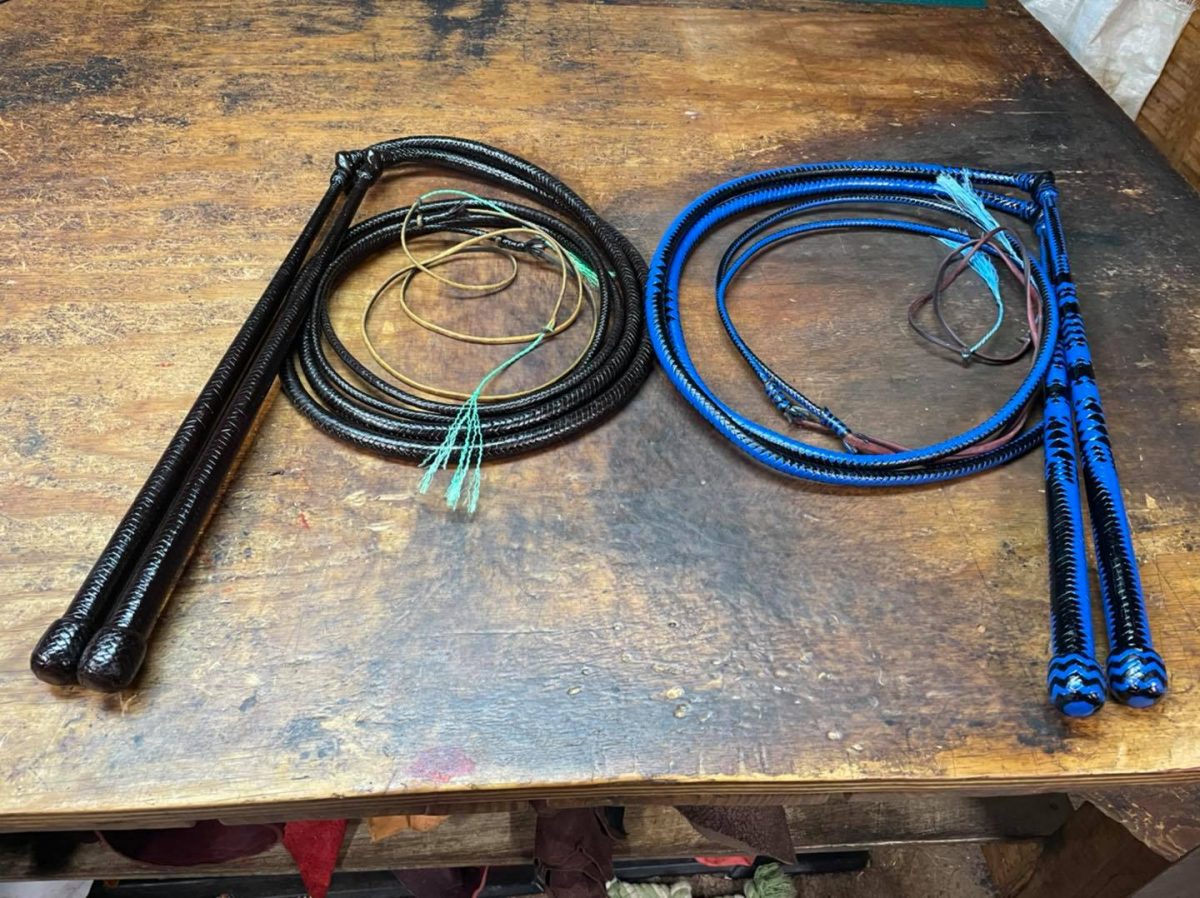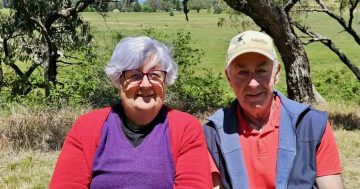
Wagga whipmaker Anthony Rennick is keeping the craft alive. Photo: Stockman’s Hall of Fame.
Anthony Rennick is preparing to head north for the cold season.
The Wagga whipmaker has been wintering in Longreach for over a decade now, moving his operation to the Stockman’s Hall of Fame and Outback Heritage Centre where he is a living exhibit.
“Years ago, the CEO at the time just asked me would I come up there and do some whip-making demonstrations,” he explains.
“I thought ‘well, who wouldn’t want to do that?’. So the wife and kids went out too and the kids were doing whip-cracking while I was whip-making in the hall.
“I thought it was a one-off and here I am coming up to 11 years.”
Anthony began plaiting leather about 30 years ago after his father did a weekend course with the legendary R.M. Williams.
“He bought RM’s handbook and some kangaroo hide lace and taught himself how to make a plaited belt,” he says.
“Then we went on holiday and had a few rainy days so he showed me how to finish the belt and it all went from there.”

Two matching pairs of kangaroo hide competition whips. Photo: Anthony Rennick.
As his interest grew, the young butcher paid his own visit to the master bushman and bootmaker and soon began selling his creations to eager buyers.
“There was a lot more demand from stockmen needing them back then, but now I do a lot more matching pairs for competition crackers and stuff,” he says.
The growth in competitive whip cracking has seen a spike in demand and Anthony says he can’t make them fast enough.
“A lot of people are getting into them and it’s good. It gets them outside, gets them off the computer,” he says.
“Especially the young kids; once they get a whip in their hand, they have trouble putting it down. They like it.”
Anthony is one of less than a dozen full-time whipmakers in Australia today and takes an end-to-end approach, tanning his own hides and preparing the leather.
“A lot of the time goes into the preparation of it, selecting the hide to start with, cutting it out, stretching, trimming it up bevelling the edges,” he explains.
“I make cowhide and kangaroo hide whips. I can get two, maybe three done a day although Kangaroo takes a good day and a half to make. I’ve always worked on quality, not quantity.”

Matched pairs of traditional Australian cowhide stock whips. Photo: Anthony Rennick.
He also enjoys sharing his knowledge and demonstrating the traditional artform to tourists at the Stockman’s Hall of Fame.
“When I finish plaiting one, I’ll hook it on to a handle and explain all about the history and heritage of it. Then we go outside and crack it to make sure it works,” he says.
“People think it’s called a stock whip because you’re working stock with it. But the actual reason is because the handle or stick is called a ‘stock’.
“It’s an Australian invention.”
Despite the small number of full-time craftsmen, Anthony says the skill is experiencing a revival with no shortage of enthusiastic hobbyists getting in on the game.
“It is on the up and up, which is good because we want to keep it alive,” he smiles.
So if you’re passing through Longreach during winter, make sure you call into the Hall of Fame to see Wagga’s only whipmaker at work.
You can also check out his whips or get in touch through Facebook.
Original Article published by Chris Roe on Region Riverina.













